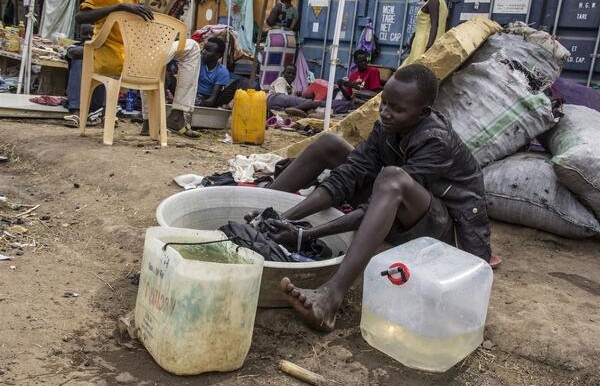At least 5,800 South Sudanese people have fled their country and arrived in Sudan during the past two weeks, most of whom have sought refuge in Abyei state. Around 23,300 refugees have arrived in other Sudanese states.
The number of people who flee the conflict in South Sudan and arrive in Sudan has increased, the UN Office for Humanitarian Affairs (OCHA) reported this week. The UN Refugee Agency (UNHCR) estimated on 23 January that around 20,000 refugees had arrived in Sudan’s border states since clashes erupted between the South Sudanese army and armed opposition forces in December last year.
At the end of January, the Sudanese government and international aid organisations estimated that 23,300 refugees have arrived in the country, however estimations from national agencies and international humanitarians differ per area. An additional 2,500-3,000 arrived in the contested Abyei area.
The majority of people (nearly 15,000) are taking refuge in Sudan’s White Nile, where two relocation sites – Kilo 10 in Al Salam and Al Alagaya in Jebelein – have been set up. Sudan does not consider the people from South Sudan as refugees, but as people with humanitarian needs. The country therefore has not established refugee camps as the arriving people can settle anywhere without restrictions.
The government and the UNHCR further expected that between 350 and 371 South Sudanese have arrived in Khartoum. Sudan’s Humanitarian Aid Commission (HAC) reported almost 5,000 refugees have arrived in West Kordofan, 3,800 in South Kordofan, and 250 in Blue Nile, fleeing the conflict. A political struggle between President Salva Kiir and sacked, former Vice President Riek Machar in Juba last December led to violent clashes between the South Sudanese army and army defectors throughout the country, fuelled by ethnic differences.
OCHA and the refugee agency have expressed concern about reports of deteriorating humanitarian conditions in sites where newly arriving South Sudanese have taken shelter, and to which agencies have had limited access.
Photo: A teenager displaced by recent violence washes clothes in a basin at a UN compound in South Sudan (K. McKinsey / UNHCR)
Related: ‘20,000’ South Sudanese flee to Sudan, but are ‘no refugees’ (23 January 2014)




